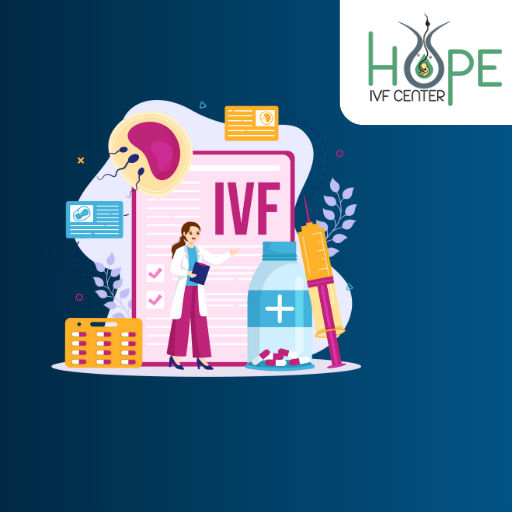The Journey of IVF: Step-by-Step Process & What to Expect
In-vitro fertilization (IVF) is a groundbreaking fertility treatment that has helped millions of couples worldwide achieve their dream of parenthood. If you’re considering IVF, understanding the step-by-step process can help you feel more prepared, confident, and informed about what to expect.
Step 1: Initial Consultation & Fertility Assessment
 What Happens?
What Happens?Meet with a fertility specialist to discuss medical history and previous fertility treatments.
Undergo fertility tests like hormone blood tests, ultrasound, and semen analysis to assess egg and sperm quality.
 Key Considerations:
Key Considerations:Based on test results, the doctor will recommend either IVF, ICSI, or other fertility treatments.
A personalized treatment plan is created for the couple.
Step 2: Ovarian Stimulation & Monitoring
 What Happens?
What Happens?The woman takes fertility medications (gonadotropins) to stimulate the ovaries to produce multiple eggs.
Regular ultrasounds and blood tests monitor follicle growth and hormone levels.
 Key Considerations:
Key Considerations:Stimulation lasts for 10-12 days, with frequent monitoring at the IVF clinic.
The goal is to mature multiple eggs to increase chances of fertilization.
 Possible Side Effects:
Possible Side Effects:Mild bloating, fatigue, mood swings, and abdominal discomfort.
Step 3: Egg Retrieval (Ovum Pick-Up)
 What Happens?
What Happens?Once the eggs are mature, a trigger injection (hCG) is given 36 hours before retrieval.
The eggs are retrieved using a minor surgical procedure under anesthesia.
A thin needle is inserted into the ovaries via the vaginal wall to collect the eggs.
 Key Considerations:
Key Considerations:The procedure is painless, but mild cramping may occur afterward.
The retrieved eggs are immediately taken to the embryology lab for fertilization.
Step 4: Sperm Collection & Fertilization
 What Happens?
What Happens?The male partner provides a fresh semen sample on the day of egg retrieval.
In case of low sperm count, sperm can be collected through TESA/PESA (surgical extraction).
Fertilization is done using either:
 Conventional IVF: Eggs and sperm are combined in a petri dish for natural fertilization.
Conventional IVF: Eggs and sperm are combined in a petri dish for natural fertilization. ICSI (Intracytoplasmic Sperm Injection): A single, healthy sperm is directly injected into each egg.
ICSI (Intracytoplasmic Sperm Injection): A single, healthy sperm is directly injected into each egg. Key Considerations:
Key Considerations:Fertilization occurs within 24 hours, and embryos start developing.
The best-quality embryos are selected for transfer.
Step 5: Embryo Culture & Development
 What Happens?
What Happens?Fertilized embryos are monitored in the lab for 3-5 days.
A blastocyst culture (Day 5 transfer) improves implantation chances.
PGT (Preimplantation Genetic Testing) can be done to screen for genetic conditions.
 Key Considerations:
Key Considerations:If extra high-quality embryos are available, they can be frozen for future use (embryo freezing).
Embryologists select 1-2 healthy embryos for transfer.
Step 6: Embryo Transfer
 What Happens?
What Happens?A selected embryo is transferred into the woman’s uterus using a thin catheter.
The procedure is quick, painless, and does not require anesthesia.
 Key Considerations:
Key Considerations:The woman may need to rest briefly after the transfer.
Medications like progesterone supplements support implantation.
 Post-Transfer Guidelines:
Post-Transfer Guidelines: Avoid heavy lifting and intense physical activity.
Avoid heavy lifting and intense physical activity. Reduce stress and maintain a positive mindset.
Reduce stress and maintain a positive mindset. Eat a nutrient-rich diet to support embryo implantation.
Eat a nutrient-rich diet to support embryo implantation.Step 7: The Two-Week Wait & Pregnancy Test
 What Happens?
What Happens?After 10-14 days, a blood test (Beta hCG) is performed to confirm pregnancy.
If positive, the woman continues hormonal support for a few weeks.
If negative, the couple can discuss next steps with the fertility specialist.
 Key Considerations:
Key Considerations:Emotional support is crucial during this waiting period.
In case of a failed cycle, the doctor may adjust protocols for the next attemp
Success Rates & Factors Influencing IVF Outcomes
 IVF Success Rates Per Cycle:
IVF Success Rates Per Cycle: 40-60% for women under 35.
40-60% for women under 35. 25-40% for women 35-40 years old.
25-40% for women 35-40 years old. 10-20% for women over 40 (depends on egg quality).
10-20% for women over 40 (depends on egg quality). Key Factors That Impact IVF Success:
Key Factors That Impact IVF Success:Age & egg quality – Younger women have higher success rates.
Sperm health – Good sperm motility and morphology improve fertilization.
Uterine health – A receptive endometrium increases implantation chances.
Lifestyle choices – A healthy diet, stress management, and avoiding alcohol & smoking improve outcomes.
Final Thoughts: Your Journey to Parenthood
The IVF process may feel overwhelming, but with expert care, advanced technology, and emotional support, many couples achieve successful pregnancies.
At Hope IVF Center, Nanded, we provide personalized fertility solutions, cutting-edge treatments, and compassionate care to help you on your journey to parenthood.
 Book a consultation today and take the first step towards a happy and healthy pregnancy!
Book a consultation today and take the first step towards a happy and healthy pregnancy! 

At Hope IVF Center, Nanded, we provide personalized fertility solutions, cutting-edge treatments, and compassionate care to help you on your journey to parenthood.
 Book a consultation today and take the first step towards a happy and healthy pregnancy!
Book a consultation today and take the first step towards a happy and healthy pregnancy! 

